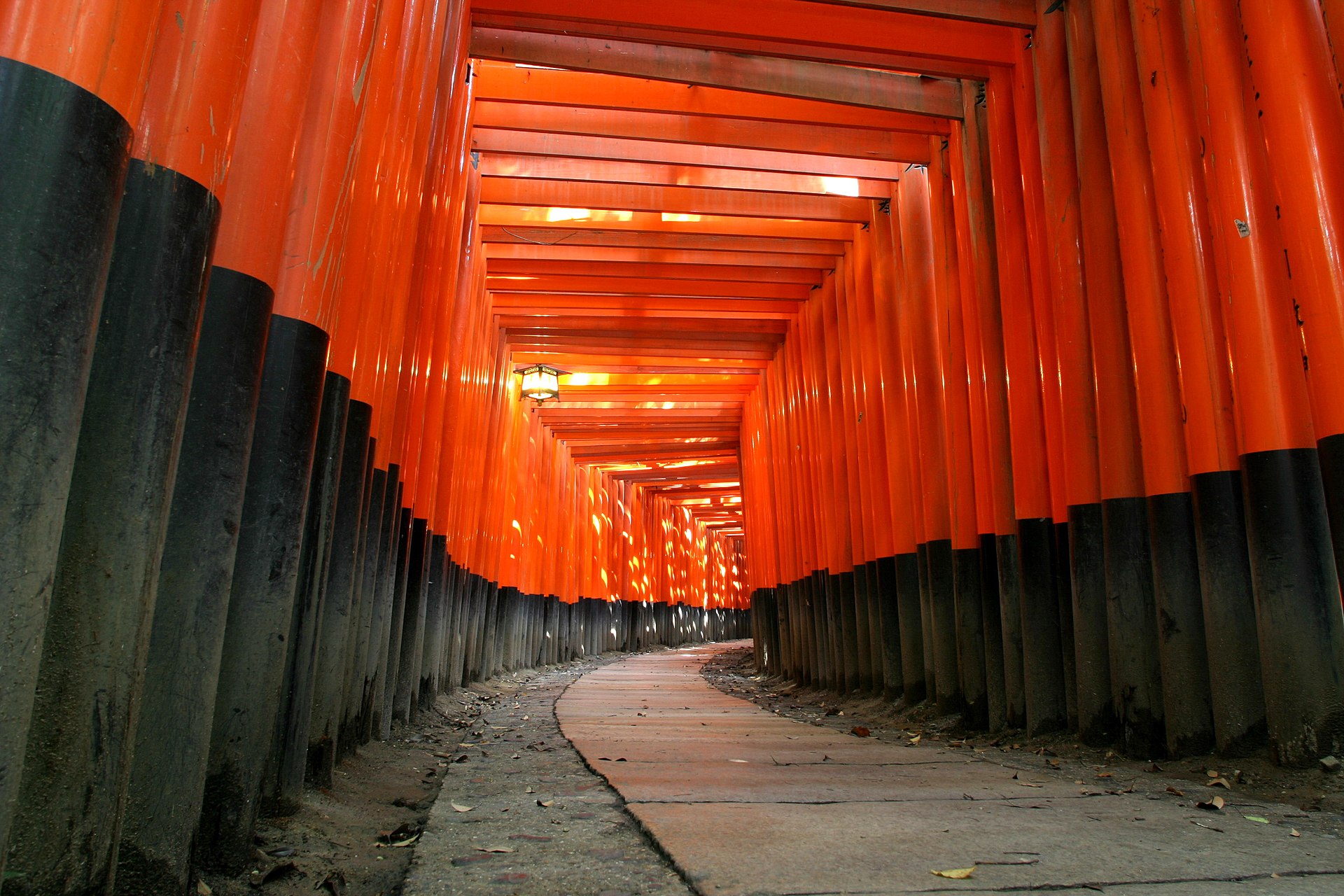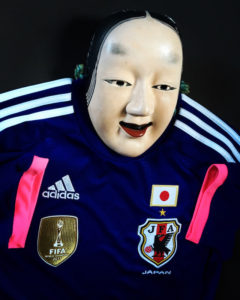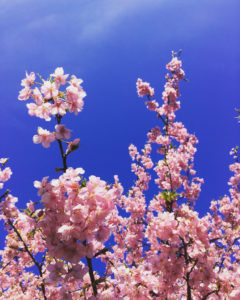
Yujiro Taniyama, Japan Broadcasting . net Corporation Tokyo correspondent/ Diaper Samurai
Kagawa, was once a superlative football player and a rising star that played for Germany’s top club Dortmund F.C, then later England Premier League’s Manchester United. The Giappone International may have surpassed his prime, nevertheless is undoubtedly still a remarkable professional.
Kagawa prefecture, meanwhile is rather an unremarkable little chunk of land in Japan’s southwestern island of Shikoku, formerly known as Sanookey 讃岐. (not ‘snookey’) – and also recognized as the birthplace of scrumptious Udon noodles.
Sanookey (sanuki) udon’s truly the best, I personally believe.
At any rate, it was also this very part of Nippon that the de-facto ‘founder of Japan Buddhism’ (which is Mahayana Buddhism, also known as esoteric buddhism, mantrayana buddhism and significantly identical to Tibetan buddhism – as they are both categorized in Mahayana school) was also born, 1250 years ago.
The prominent figure’s name is 空海 Kukai. Just like Michael Jackson back in the good old days, the former was and still is the indisputable superstar in our Buddhism world. To make a long story short, had he not been around, it is highly likely that the bedrock of Japan’s Buddhism would’ve been totally different. Kyoto’s worldfamous 伏見稲荷 Fushimi-Inari temple (a Mahayana Shingon school temple known for its breathtaking red Torii gates) and all other Inari temples too, wouldn’t be what you see them today.
Kookai, by the way is some irrelevant fashion brand.
Born in 773
Shiba Ryotaro 司馬遼太郎(1923-1996), the most illustrious and perhaps the most widely read author in Nippon history wrote in his renowned masterpiece, 「空海の風景」Kukai no foo-kei as follows;
「空海は延暦十年(791)、十八歳で大学に入り、その年か、もしくはその翌年に退学してしまっている」Kukai entered academia in 791, at the age of 18, then dropped out the same year or the year after.
Unless you’re fabulously dumb, we can easily acknowledge that if you subtract 18 from 791, the mathematical outcome would be 773.
Secondly, 金岡秀友 Kanaoka Shuyu (1927-2009) – who was one of the most revered and distinguished scholars of Japan’s Mahayana Buddhism (Professor Emeritus at Toyo university 東洋大学名誉教授) had openly wrote that Kukai was born in 773. In the book「日本仏教のこころ」(‘Heart of Japanese Buddhism’ – Yuhikaku publishing), for example, he clearly jot down;
「日本の精神史形成の最初で最後な人物の一人に、空海(773-835)をあげることには大きな意義はなくなるのではないかと思われる」(P.61) – pointing out that Kukai was born in 773.
Now lastly and foremost, let us all take a listen to the voice of ひろさちや Hiro Sachiya (1936-2022), another widely popular author on Indian philosophy and Buddhism. In his book 「空海入門」Entry to Kukai (Chuco-Bunko publishing), the candid sage argues;
「だが、空海の生年月日については、それほど分明ではない。一般には、空海は、宝亀五年(774)六月十五日、四国の讃岐國多度郡屏風が浦で生まれたとされている。幼名を”真魚”といったらしい。この宝亀五年の誕生は、真言宗の宗門のほうで伝統的に採用してきた説である。しかし、歴史家のほうからは、宝亀四年(773)説が唱えられている」
When it comes to the birthdate of Kukai, however, things are not very clear. Generally speaking, it is said that he was born in Sanookey on Shikoku island in 774, on June the15th. This is a theory that has been traditionally propagated by Mahayana Buddhism’s Shingon school, originally set up by Kukai.
On the contrary, the historians have advocated he was born in 773.
Mr.Hiro then concludes (translated in brief);
「六月十五日、というのも、それほど根拠のあるものではない。不空という名の僧がいる。インド出身の僧で、インド名をアモーガヴァジュラといった。不空はインドから中国に来て活躍し、数多くの密教経典を中国語に翻訳した。ところで、不空の弟子が中国人の恵果であり、空海は唐に渡って恵果から密教を継承した。したがって、空海は、不空の孫弟子になる。
そして、不空が没したのは、唐の大暦九年(774)年六月十五日であった。唐の大暦九年は、西暦を見ればおわかりのように、わが国の宝亀五年にあたる。宝亀五年は、空海の誕生年である。だとすれば、いつの間にか空海が不空の生まれ変わりだとする伝説が出てきても、ちっとも不思議ではない。いや、きっと空海自身が、その生まれ変わりを信じていたはずだ。
かくて、空海の生年月日は、774年6月15日でなければならぬことになった」
There was an Indian Buddhist monk by the name of Amoghavajra. He traveled to China and translated dozens of Mahayana Buddhism sutras to Chinese. His disciple, by the way was Chinese monk Huiguo – who later passed on esoteric teachings to Kukai. That said, we can learn that Amoghavajra is the ‘Grand Master’ of Kukai.
And it was June 15th, of Tang dynasty’s 大歴 9th year that Amoghavajra died. Tang’s 「大歴 9th year」is synonymous for Nippon’s 「宝亀 5th year」, which is the birth year of Kukai. Under such circumstances, it wouldn’t be a surprise should a myth arise that Kukai was the ‘rebirth of Amoghavajra’. Well perhaps Kukai himself believed so.
So, his birthday now had to become July the 15th, 774A.D.
The Diaper Samurai’s excremental conclusion (Final verdict)
A petty, insignificant matter it surely is; 773 or 774.
Notwithstanding, it is my strong belief that whimsical lies need frequent debunking. And moreover this is an issue that’s relevant to the very founder of Nippon Buddhism – which to me, in a way matters.
Henceforth, I, the Diaper Samurai would like to proudly announce his incontrovertible verdict.
Kukai was proudly born in 773. Period.
Why? Because the figures simply don’t add up, if the superstar was born in Christian Era of 773. Had he been born in mythical 774, it would be nothing but a Tom Cruise’s Mission Impossible for him to enter academia in 791 at the age of eighteen, as literal genius Shiba Ryotaro had argued.
774 + 18 = 792.
Mathematics, ladies and gentlemen, mathematics. Added to that, all dozen books on Kukai I’ve read so far follows the same path. 18 years old, 791A.D.
Make no mistakes, damsels and gentlemen, it may be worth noting that I do have tremendous respect for Kukai 空海 and his Shingon school, when compared to an average man around. And that is exactly why, probably that I am sickeningly meticulous (obsessed!) about the controversy. Should the Father of Japan Buddhism’s birthday have been cooked up like a well written Manga – in order to simply justify the reincarnation theory that Amoghavajra became Kukai; to me seems terrifically ludicrous. As Hiro Sachiya pointed out, “It had to be June 15th, 774” – thus the myth was invented.
I mean, let alone the year, but then what could we possibly make of this ‘exact date of birth’?! Not only does it seem implausible, but the whole thing sounds awfully fictional. A hoax, fake news, deliberate coincidence, is it not?
Remember, that ‘it had to be’ that day, that very year.
Verily lastly, please let me underscore the fact if you visit Tokyo next year, it is more than certain that you’ll witness monks and posters propagating “1250th anniversary of Kukai’s arrival to earth”. Especially in Shingon school temples. And as a deep admirer of glorious Gaijin travelers visiting the Land of the Rising Phallos Festival, it would be egregiously painful to see you being duped by a wishful thinking that is fantastically unsubstantiated. So my little advice for you is, to not take the upcoming ‘anniversary’ at face value.
Instead, just enjoy it as a fabulous capricious Manga!
Well, that is my argument dear fellow citizens across the planet, to say the least. What’s your say?!
Domo Arigato.
Bow.










